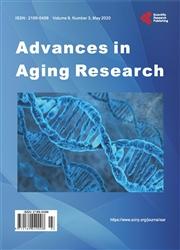Telomeres and Telomerase: Molecular Views and Perspectives
引用次数: 0
Abstract
Telomere, the nucleoprotein structure at the end of eukaryotic linear chromosomes is indispensable for maintaining the genome stability. Telomeric DNA loss is apparent with each cell division, which marks an endpoint to the indefinite replication of the cell by causing replicative senescence that may lead to the programmed cell death. The loss of telomere is normal in cell division and as such after 20 - 40 divisions, telomere becomes too short to facilitate the capping function. Telomere uncapping or chromosomal free end causes a potential threat to the genomic stability and thus leads to the accumulation of chromosomal abnormalities that have been known to play a role in aging and cancer. Telomerase, the ribonucleoprotein complex, and its accessory proteins are required to maintain the telomere sequence. Telomerase plays a key role in maintaining the length of telomere by adding G-rich repeat sequences. Its activity has been found to be quite high in the gametes, stem cells and most importantly tumor cells. Almost 85% of tumor cells compensate for telomere loss aided by telomerase-associated protein complex and shelter in complex or telosome. However, 5% - 10% of the cells undergo telomerase-independent mechanism. This review presents the molecular view of the telomere and telomerase along with its associated complex structures. It also discusses its contrasting role in causing cellular senescence and promoting tumorigenesis.端粒和端粒酶:分子的观点和观点
端粒是真核生物线性染色体末端的核蛋白结构,是维持基因组稳定所不可或缺的。端粒DNA的损失在每次细胞分裂中都很明显,这标志着细胞无限期复制的终点,因为复制衰老可能导致程序性细胞死亡。端粒的缺失在细胞分裂中是正常的,因此在20-40次分裂后,端粒变得太短,无法促进封盖功能。端粒脱帽或染色体游离端对基因组稳定性造成潜在威胁,从而导致染色体异常的积累,已知这些异常在衰老和癌症中起作用。端粒,核糖核蛋白复合体,及其辅助蛋白是维持端粒序列所必需的。端粒酶通过添加富含G的重复序列在维持端粒长度方面发挥着关键作用。它的活性在配子、干细胞和最重要的肿瘤细胞中都很高。几乎85%的肿瘤细胞通过端粒酶相关蛋白复合物和在复合物或端粒中的庇护所来补偿端粒的损失。然而,5%-10%的细胞经历端粒酶非依赖性机制。本文综述了端粒和端粒酶及其相关复杂结构的分子观点。还讨论了其在引起细胞衰老和促进肿瘤发生中的对比作用。
本文章由计算机程序翻译,如有差异,请以英文原文为准。
求助全文
约1分钟内获得全文
求助全文

 求助内容:
求助内容: 应助结果提醒方式:
应助结果提醒方式:


